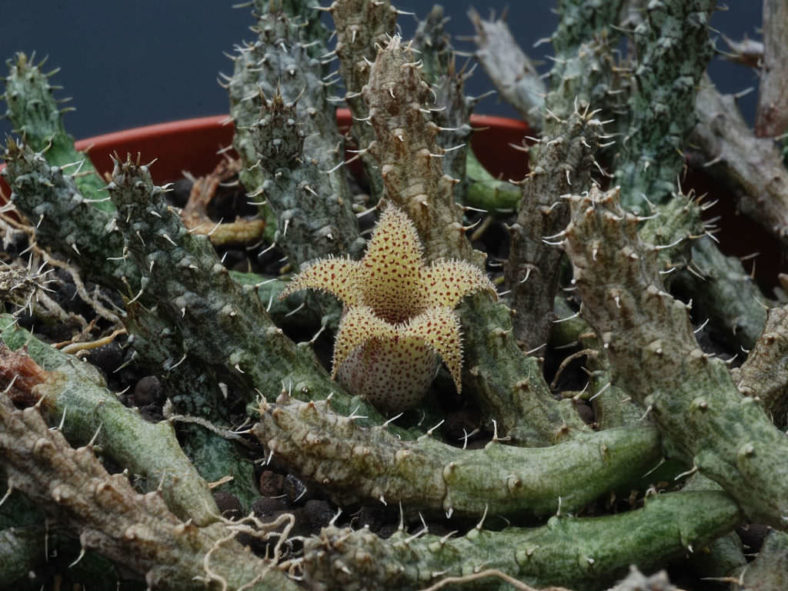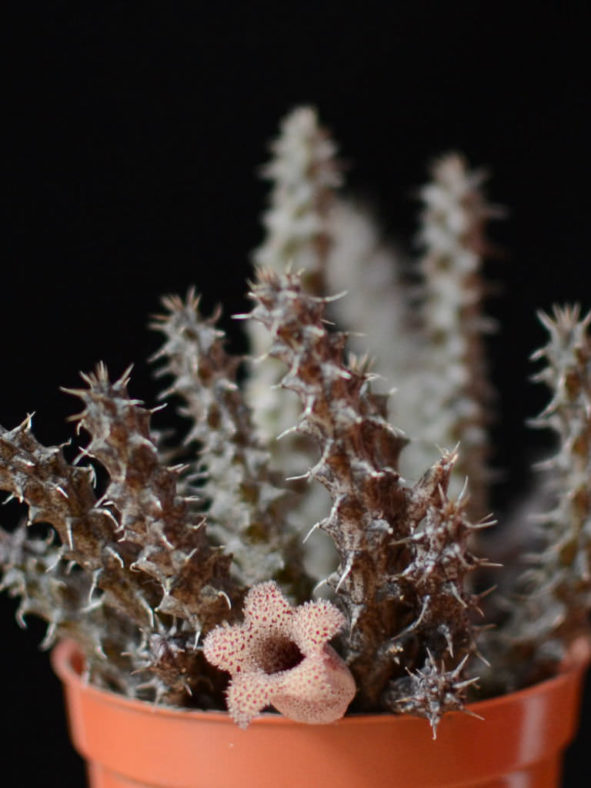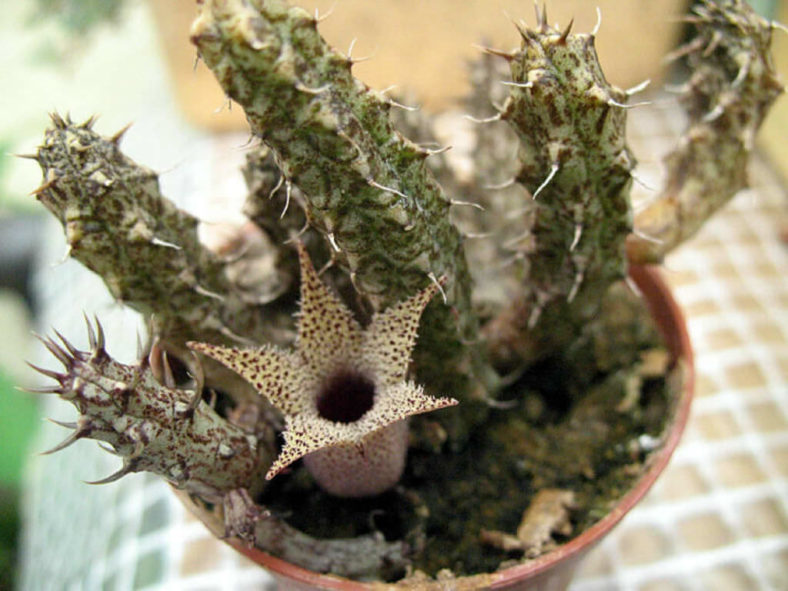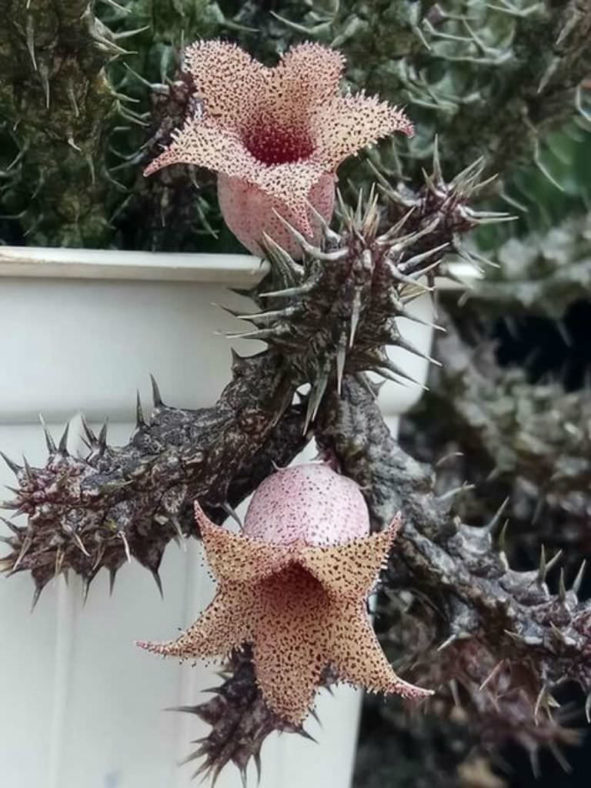Scientific Name
Stapelianthus decaryi Choux
Synonym(s)
Ceropegia decaryana
Scientific Classification
Family: Apocynaceae
Subfamily: Asclepiadoideae
Genus: Stapelianthus
Origin
Stapelianthus decaryi is native to Madagascar.
Description
Stapelianthus decaryi is a small succulent that forms large, compact clumps of grey-green stems spotted with red-brown and covered with tubercles. The stems are erect to decumbent and can grow up to 4 inches (10 cm) long and 0.6 inches (1.5 cm) in diameter.
The flowers are chalice-shaped, creamy-yellow with maroon flakes and spine-tipped papillae in the upper half. They appear in late summer and fall and can reach up to 1 inch (2.5 cm) in diameter.

Hardiness
USDA hardiness zones 10a to 11b: from 30 °F (−1.1 °C) to 50 °F (+10 °C).
How to Grow and Care
Stapeliads are relatively easy to grow. However, they should be treated as outdoor plants as they will easily rot indoors and cannot flower without exposure to outdoor temperature fluctuations. They should be grown under cover so that watering can be controlled. Stapeliads require a reasonable amount of sunlight to promote flowering and maintain a well-shaped plant. Very shady positions will produce very poor flowering.
These plants come from climates where they survive extremely high temperatures in the summer months, so most growth is in spring and fall, with flowering in fall when the weather starts to cool down. In the growing season, water in moderation when needed, ensuring the soil is pretty dried out between waterings. Do not water between late fall and early spring.
The easiest and best way to propagate Stapeliads is by using stem cuttings, which can be taken virtually throughout the year. The seed is also a method of propagation.
Learn more at How to Grow and Care for Stapeliads.
Links
- Back to genus Stapelianthus
- Succupedia: Browse succulents by Scientific Name, Common Name, Genus, Family, USDA Hardiness Zone, Origin, or cacti by Genus
Photo Gallery
Click on a photo to see a larger version.


